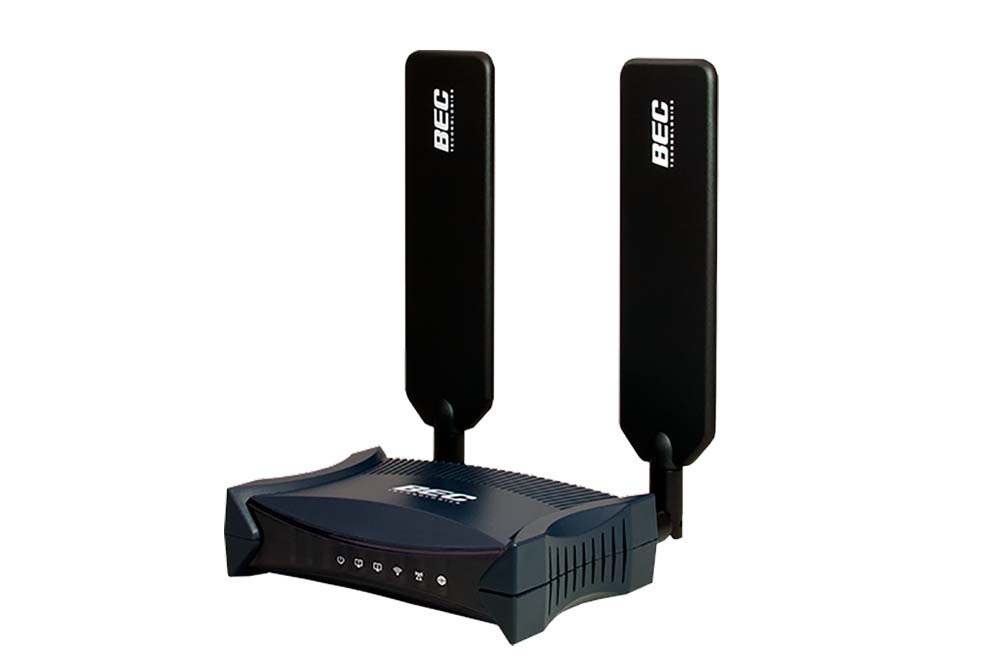
- Details
- By Chez Oxendine
- Economic Development
FORT YATES, N.D. — The Standing Rock Sioux should have fixed wireless broadband access across its North Dakota reservation by the end of next month.
That’s according to Standing Rock Telecom General Manager Fred McLaughlin, whose organization tapped Richardson, Texas-based BEC Technologies to install routers to access midband internet across the Standing Rock Reservation.
The announcement of the BEC project follows a build out by Nokia in which antennas and other equipment were installed on existing tribal cell towers to access the provided 2.5 GHz spectrum.
“It’s a slow launch because we’re focusing on schools, but hopefully by the end of next month, we’ll be 100 percent on this new network for everybody,” McLaughlin told Tribal Business News.
While wired internet is widely available in much of the Standing Rock Reservation, installation costs can be prohibitive, especially when new lines are needed to bring a residence online. Moreover, while the reservation has cellular service that could be accessed via hotspot, prolonged use of such hotspots can overheat devices and destroy the accompanying SIM cards, according to McLaughlin.
Using BEC’s routers would drastically reduce start-up costs for customers who need more affordable access, McLaughlin said. Obtaining the routers was the continuation of a longstanding relationship with the company, he added.
“There’s no one device that works on all carriers and frequencies, and we’re limited to what devices we can use for access,” he said. “Bigger companies like Samsung and LG only cater to carriers like Sprint and Verizon for devices that will work on their network. We were able to find BEC and utilize their products on our network, and we’ve just had that kind of relationship ever since.”
According to a statement from BEC, consistent and affordable internet access has become even more important amid COVID-19, which has forced people to work and learn remotely as well as access health care via telehealth platforms in many cases.
D’Andre Ladson, vice president of marketing at BEC Technologies, called the partnership with the Standing Rock Sioux a “unique opportunity.”
“We share the same vision for reliable high-speed broadband connectivity to under-served rural communities,” Ladson said in a statement.
‘Digital connectivity challenges’
Standing Rock Telecom takes the step into 2.5 GHz wireless access following a 2020 federal initiative to give tribal applicants access to unassigned wireless broadband spectrum over their reservations. The Federal Communications Commission issued wireless broadband permits to 154 tribal applicants in October and another 22 in January.
The “Rural Tribal Priority Window” ran from February 2020 to September 2020, during which the FCC solicited applications from federally recognized tribes to improve access in traditionally underserved areas, according to prior reporting from Tribal Business News.
The 2.5 GHz spectrum has historically been reserved for educational institutions, but available spectrum on the midband was offered for free to tribal applicants during the window.
“Few communities face the digital connectivity challenges faced by rural Tribes,” former FCC Chairman Ajit Pai said in a statement. “By prioritizing Tribal access to this mid-band spectrum, we are ensuring that Tribes can quickly access spectrum to connect their schools, homes, hospitals, and businesses.”
An evolving technology
Standing Rock Telecom was among the first to receive a license to use the 2.5 GHz spectrum from the FCC. The company also was among the first tribally owned wireless internet providers in the United States, according to McLaughlin.
“The tribe didn’t want to authorize any build out on tribal lands, but that turned into a shift of getting services out to members through our own business and company,” McLaughlin said.
To that end, the Standing Rock Sioux built cell towers in each of the communities on the reservation and founded Standing Rock Telecom as a tribal enterprise. The move to access the 2.5 GHz spectrum is the latest step in a history of evolving internet technology on the reservation.
In 2009, the tribe worked with Minneapolis, Minn.-based Turtle Island Communications to buy 1900 MHz spectrum from Sprint, which allowed the tribe to become an eligible carrier under the FCC, the first tribal entity to do so, McLaughlin said.
From there, Standing Rock Telecom built from 1x speeds to 3G and 4G speeds, which are now available across the reservation.
Providing that support keeps internet costs low for people who can’t afford the typical high installation costs for a wired connection, McLaughlin added.
“The original purpose for this company is to provide a low-cost solution for telecommunications, and a lot of people don’t have the money to afford $500-$1,000 for the startup costs for internet,” McLaughlin said, noting that establishing a tribal telecom “allows us to keep our prices low.”
